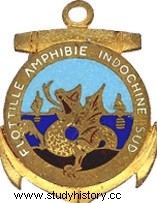
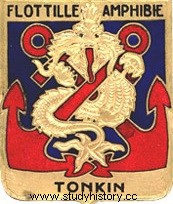
The Dinnassaults
The Dinnassé are units of the French Navy engaged on the inland waterways of the peninsula during the Indochina War. During the conflict ten units of this type will be born.
History
The Dinassault or naval assault divisions were created in 1947, thus succeeding the river flotillas of 1945 and 1946 set up at the request of General Leclerc. They will be used until the end of the conflict and the concept will be taken up by the Americans during the Vietnam War.
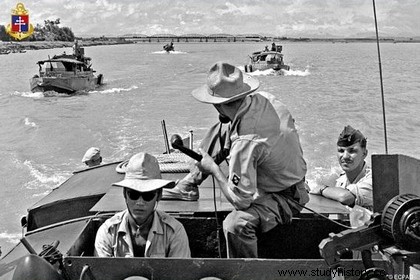
Their role is to transport, land and support infantry but also monitor waterways and supply isolated posts.
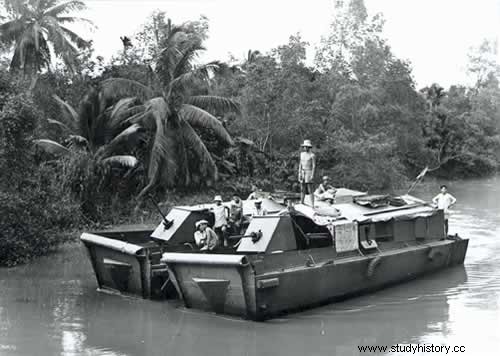
The sailors who served in these units constituted the navy in khaki as opposed to to the navy in white who traditionally embarks on the ships of the high seas and dresses in white.
The Dinassault will be frequently used throughout the conflict, particularly during operations Léa, Ceinture, ....
Constitutions
Each Dinassault consists of approximately ten buildings and is commanded by a Lieutenant Commander or a Naval Lieutenant. It generally includes a commando-type infantry unit (Commandos de Montfort, Jaubert, etc.).
The buildings that make up a naval assault division are :
landing craft infantry or LCI
leslanding craft tank or LCT
leslanding craft mechanized or LCM
landing craft vehicle &Personnel or LCVP
leslanding craft support or LCS
leslanding craft assault or LCA
les Landing Ship Supply Largeou LSSL, support building- fire
The ten naval assault divisions are distributed in the two deltas of the Mekong and the Red River as follows:
Dinsassault 2, 4, 6, 8 and 10 in Cochinchina
Dinsassault 1, 3, 5, 12 and Dinsassault of Haiphong in Tonkin
Traditions
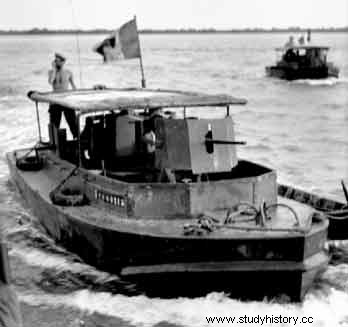
Currency
Save or Perish
Insignia
1st Dinassault
4th Dinassault
Personalities who served in the units
Maurice de Brossard (Ezy-sur-Eure 1907-1997), rear-admiral, aviator, painter, commanded a squadron of seaplanes, then DinAssault 1, author of one of the only books on these units:DinAssault, Paris, France-Empire, 1952
Louis Buot de L'Epine (Bourges 1906-1949), commander of Dianssaut 6, died in service in Morocco.
Daniel Degoy (1908-1995), commander of DinAssault 4 when it was created.
Pierre Guillaume (August 11, 1925, Saint-Malo - December 3, 2002), also known as Commandant Pierre Guillaume, also known as "the Drum Crab", graduated from the Naval Academy in 1948. During the Indochina War, he was a naval officer in a naval assault division. After the Geneva Accords, in 1954, he ended the war with the rank of lieutenant.
Jean-Louis Delayen, born March 16, 1921 in Saint-Raphaël (Var), and died on October 3, 2002 in Virginia (United States). He then enlisted in the army, and was assigned to the 6th Regiment of Senegalese Riflemen (6th RTS), then to the Colonial Infantry Regiment of Morocco (RICM). In Indochina Delayen became a specialist in the creation of amphibious commandos (commando N°13). Finally he commands "the sea group", six autonomous commandos:three are assigned to the machines of the "DINASSAUTS FLEUVE" and three others to the Coastal operations4.
Commander François Jaubert (Perpignan 1903-1946), founders of River Brigades at the origin of the Dinassault. Killed in the enemy, his name was given to a commando.
